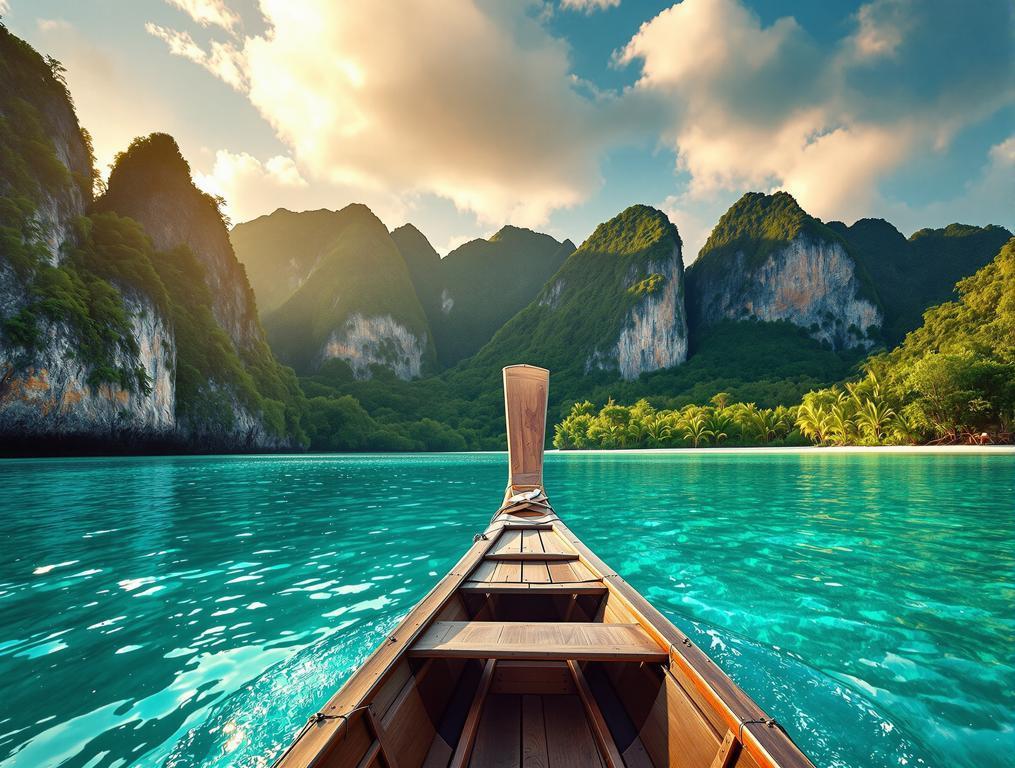The longtail boat glides through emerald waters, revealing an island that feels like Thailand’s best-kept secret. As we approach Koh Yao Yai’s wooden pier, I’m struck by the peaceful contradiction – an island where 90% of the 8,000 residents are Muslim, yet sits just 30 minutes from Buddhist Phuket’s party beaches. My translator Ahmed whispers that we’ve arrived during the perfect moment – monsoon season has turned the island emerald green, but the crowds haven’t discovered the advantages of visiting during these lush months.
Thailand’s Hidden Muslim Island: Where 90% Practice Islam Just 30 Minutes from Buddhist Phuket
The cultural whiplash is immediate. Prayer calls echo through villages instead of techno beats. Women in hijabs sell coconuts by the roadside. The air smells of cardamom coffee rather than Chang beer.
“You won’t find many bars here,” Ahmed explains as we pass pristine beaches without a single resort towel in sight. “Alcohol is available at some resorts, but the local culture shapes everything differently.”
This remarkable contrast creates a travel experience unlike anywhere else in Thailand. While over 40 million visitors flood into Thailand annually, only 120,000 travelers discovered Koh Yao Yai last year – creating a visitor-to-resident ratio that allows for authentic cultural immersion without overwhelming local life.
Similar to this Greek island with authentic culture, Koh Yao Yai manages to maintain its identity despite growing tourism interest. The island stretches 137 square kilometers of verdant hills, rubber plantations, and fishing villages where time seems suspended.
The Island Split by Serpents: Mythical Origins in the Andaman Sea
Local legend tells that Koh Yao was once a single landmass until battling sea serpents tore it apart, creating Koh Yao Yai (“Big Long Island”) and its smaller sibling Koh Yao Noi. The myth perfectly captures the island’s character – dramatic yet peaceful, divided yet whole.
Standing on Laem Had Beach during low tide, watching sandbars emerge like serpent backs from retreating waters, the ancient story feels strangely plausible. Unlike the manufactured experiences of nearby Phuket, here traditions remain intact.
“We come to Thailand every year, but this island feels like discovering Thailand for the first time again. The beaches are pristine, the people genuine, and the pace feels like Thailand before Instagram discovered it.”
This authenticity extends beyond cultural experiences. Unlike Nicaragua’s beaches that expand dramatically with tides, Koh Yao Yai’s coastline transforms during monsoon season into a lush paradise where fewer visitors means more meaningful connections with locals.
Traditional fishing boats still outnumber tourist longtails. The economy remains 65% dependent on fishing, rubber, and coconuts, with tourism accounting for just 35% of local income – a balance that preserves cultural integrity.
Monsoon Magic: Why June-August Offers the Most Authentic Experience
Conventional wisdom suggests avoiding Thailand during monsoon season, but on Koh Yao Yai, this creates a perfect opportunity. The rains typically arrive as brief afternoon showers, leaving mornings crystal clear and turning the landscape vibrantly green.
June through August delivers the island’s most authentic experience. Ferry service from Phuket’s Bang Rong Pier runs six times daily (first departure at 8:30 AM), taking just 30 minutes and costing 300 baht ($8.50).
To truly experience local life, rent a scooter (300 baht/$8.50 daily) and explore fishing villages like Chong Lad where elderly Muslim women craft batik textiles in open-air workshops. Like this Maine town that maintains its identity despite tourism, Koh Yao Yai has found balance between welcoming visitors and preserving traditions.
Sustainable Paradise: How Eco-Tourism Preserves Island Culture
Recent eco-tourism initiatives have gained recognition, with five resorts now operating on sustainable principles. Traditional fishing techniques and 90-minute mangrove kayaking tours (600 baht/$17) provide economic opportunities while preserving cultural practices.
As I watch the sun set over Phang Nga Bay’s limestone karsts, Ahmed’s words resonate: “We say the island is protected by the serpents – they keep us separate enough to remember who we are.”
My daughter Emma would call this “the real Thailand” – where prayer calls mix with gentle waves, where monsoon rains bring renewal rather than inconvenience, and where being slightly harder to reach has preserved something increasingly rare in our hyper-connected world: a place that still feels genuinely itself.
